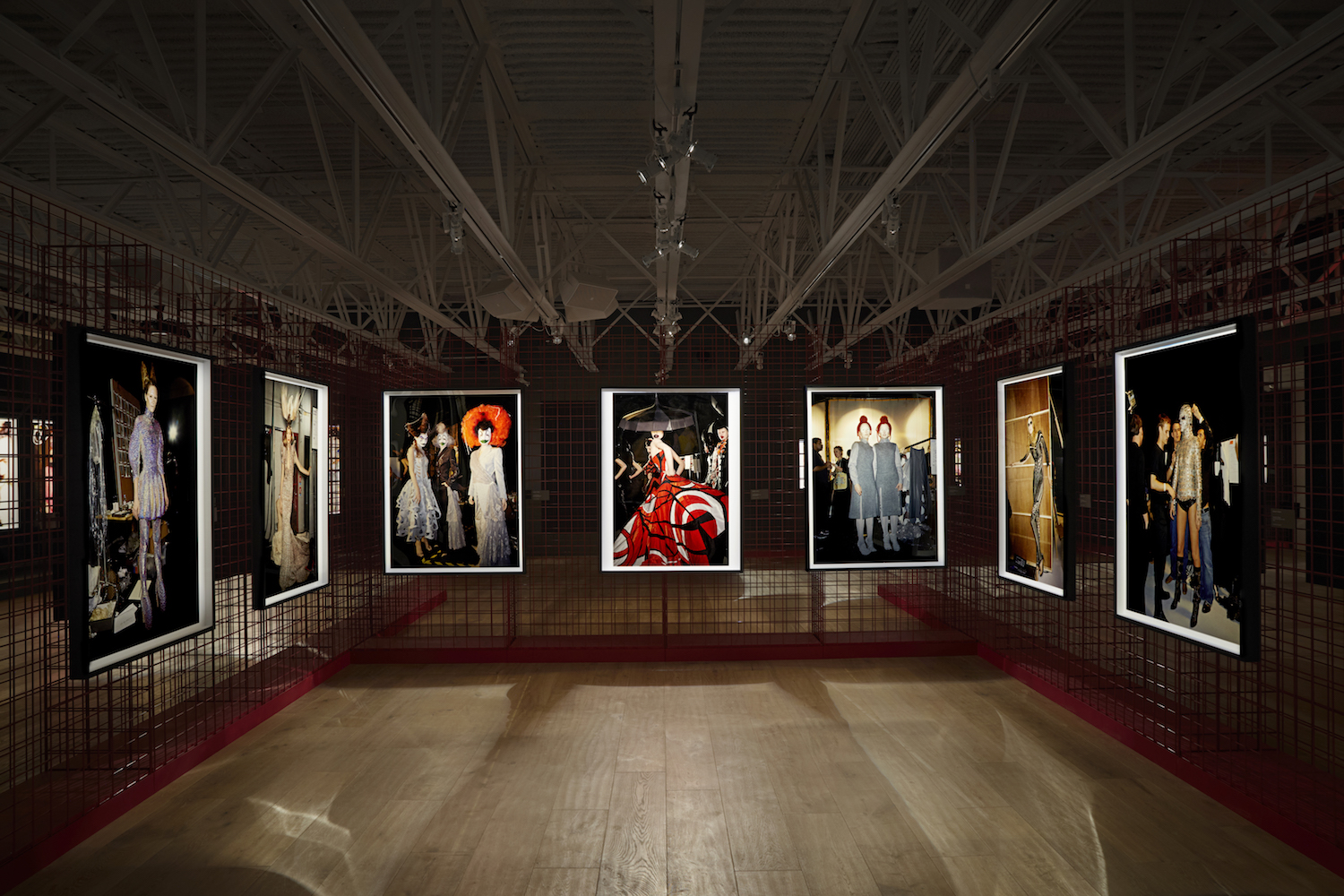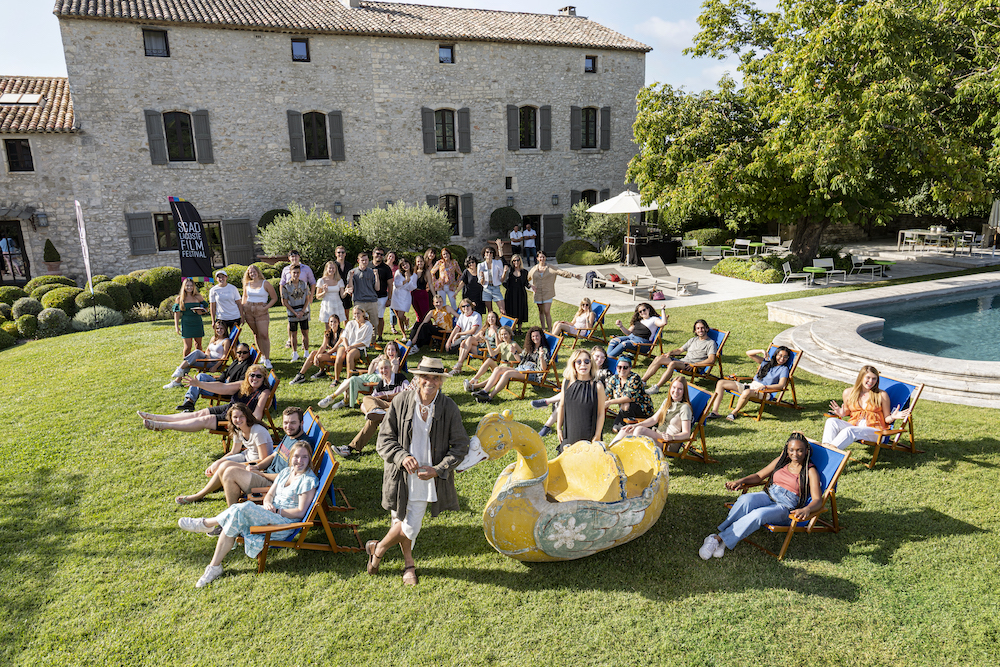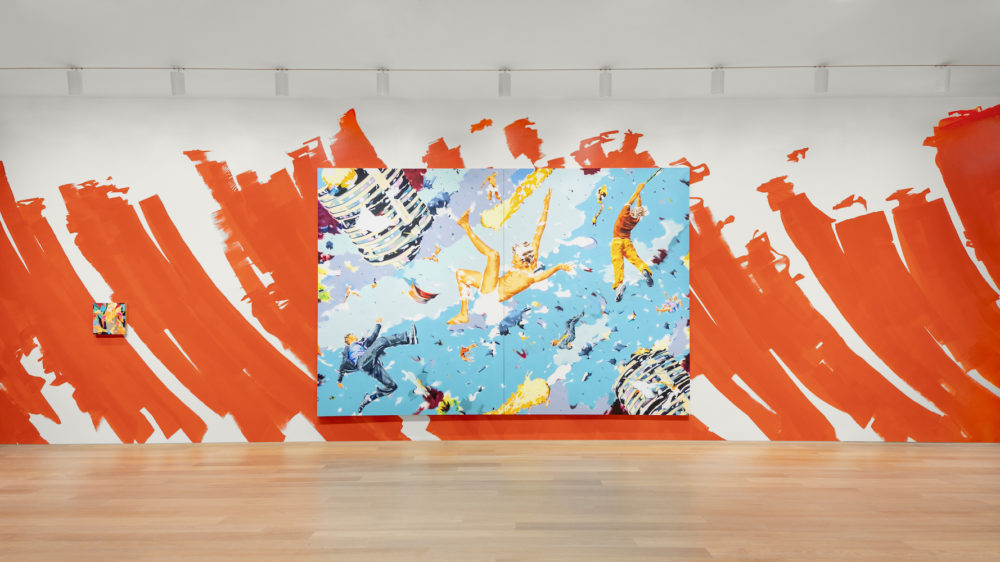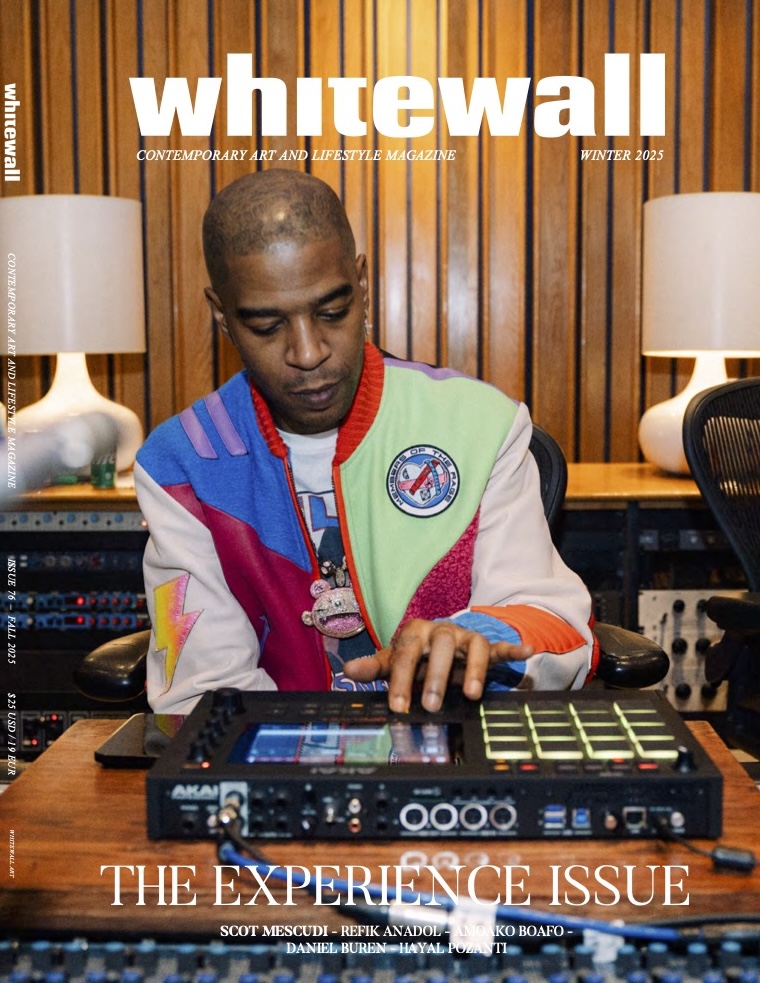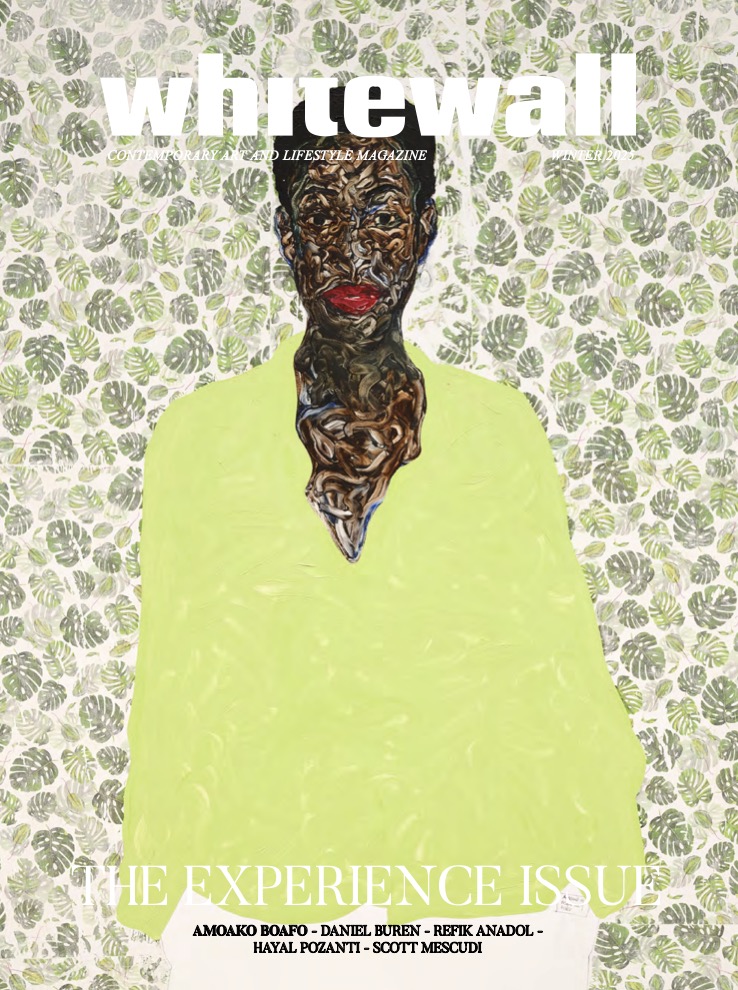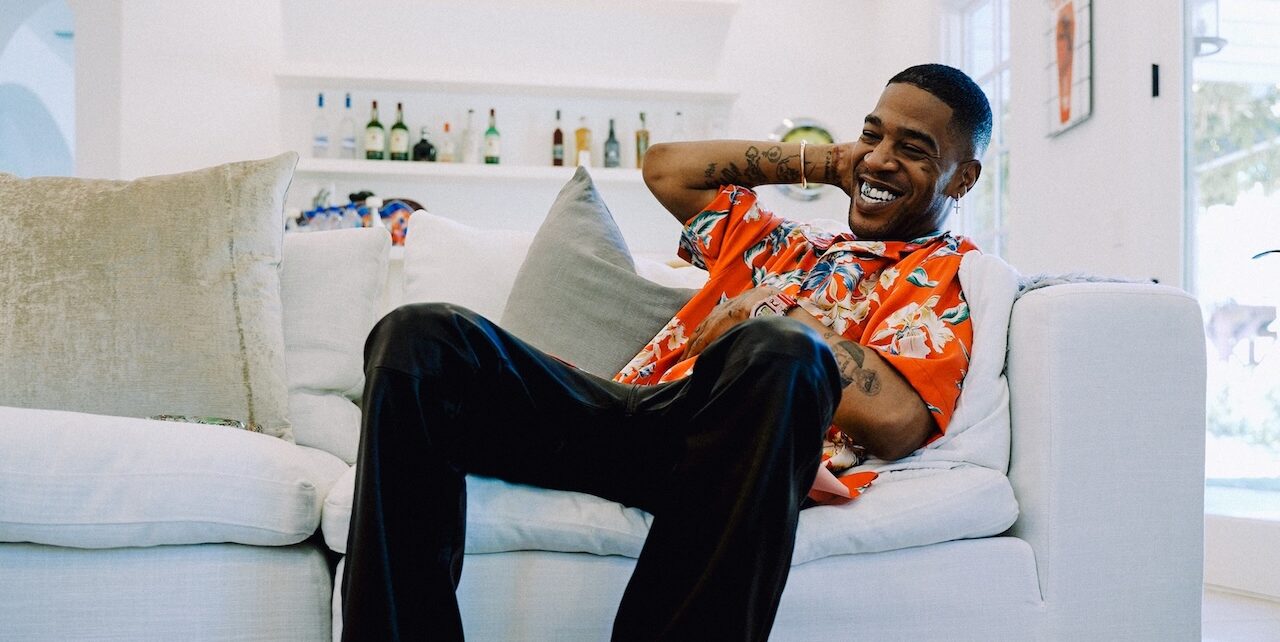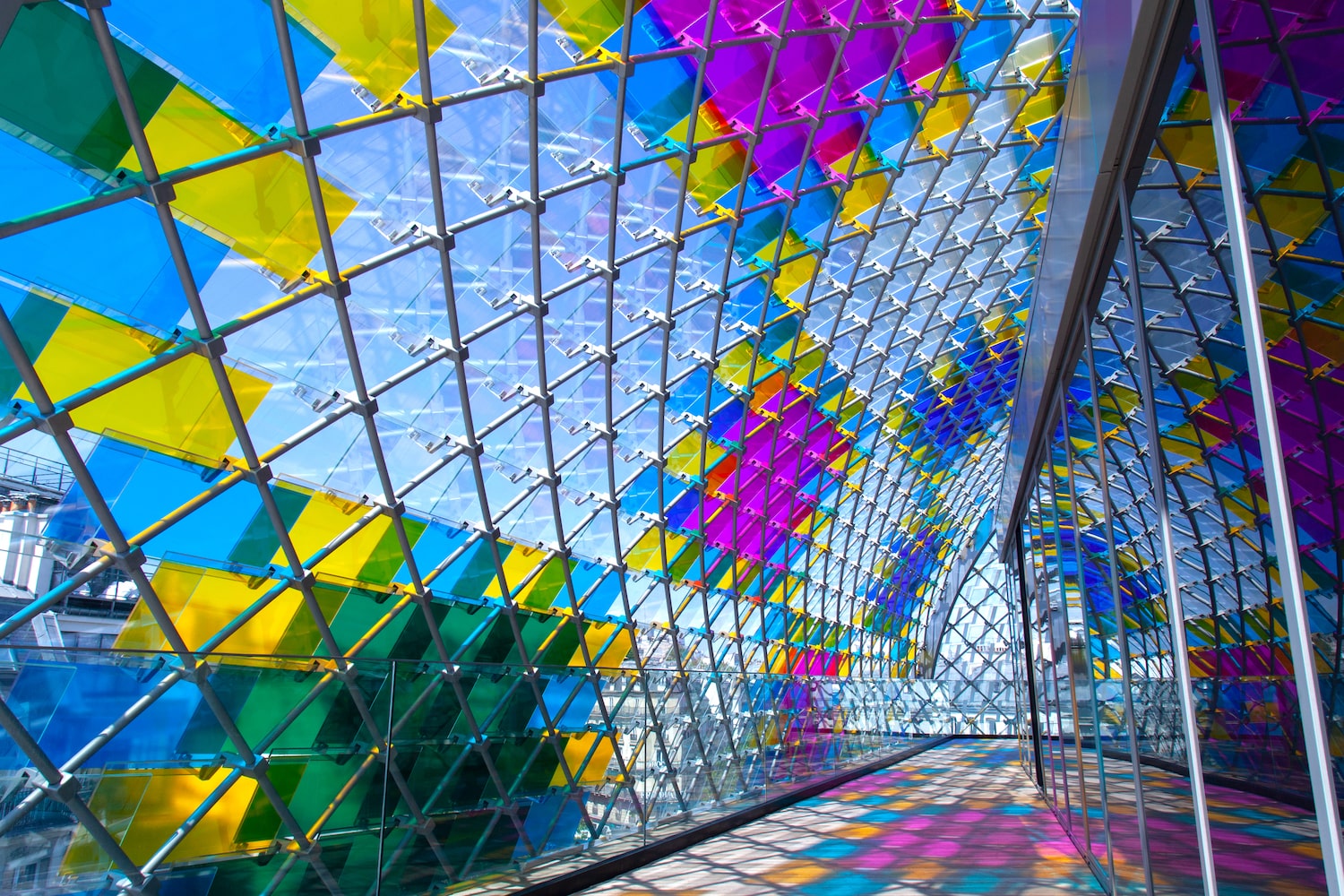Currently on view at SCAD FASH Museum of Fashion + Film in Atlanta through April 16, “Backstage Pass: Dior, Galliano, Jacobs, and McQueen is the first solo exhibition for London-based fashion photographer Robert Fairer. The show presents over 100 high-energy images of backstage moments taken from the iconic runway shows and presentations of Dior by John Galliano, John Galliano, Marc Jacobs, and Alexander McQueen.
Curated by Rafael Gomes, director of fashion exhibitions at SCAD FASH, the show of intimate candids and unforgettable shots taken from the 1990s to the early 2010s were sourced from Fairer’s extensive archives and his “Unseen” series of photography books by Thames & Hudson focused on the same four designers. It offers an inside look at what fashion insiders and historians call the “Golden Age of Fashion,” through some of the world’s top fashion productions, and the models, assistants, hairstylists, and makeup artists that fueled their acclaim from behind the curtain.
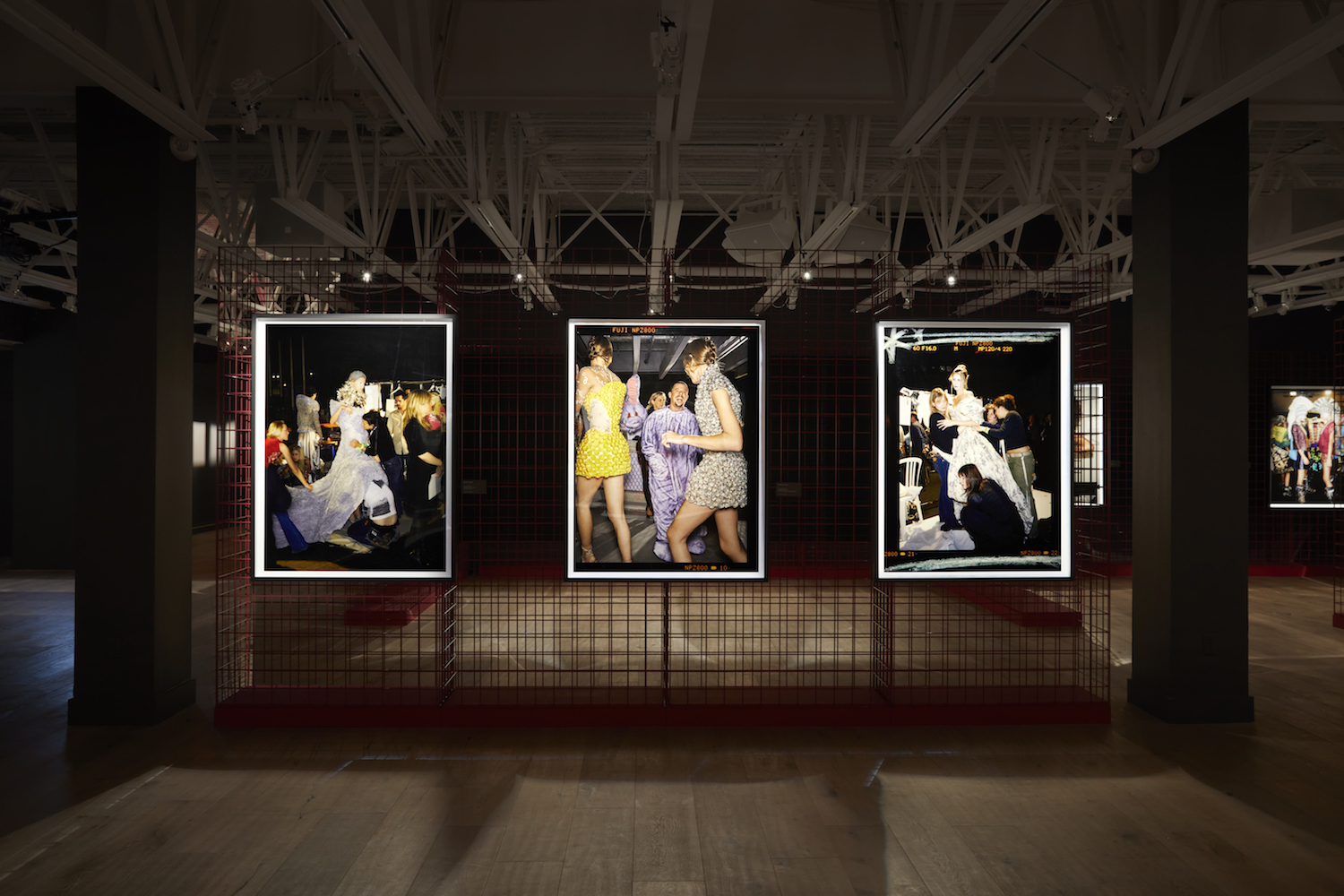
“”
“Robert Fairer is one of the foremost photographers of our time, and it is an honor to celebrate his unique eye, style, and point of view captured from a rare vantage point in fashion history,” said Gomes. “This exhibition represents a living history of his work designed to inspire SCAD students, alumni, and museum guests, opening their eyes to Robert’s creative genius chronicling one of fashion’s most enthralling eras.”
In celebration of the exhibition, Whitewall spoke with Fairer about his photography practice, how his work has evolved over the past three decades, and which “Unseen” book he’s working on next.
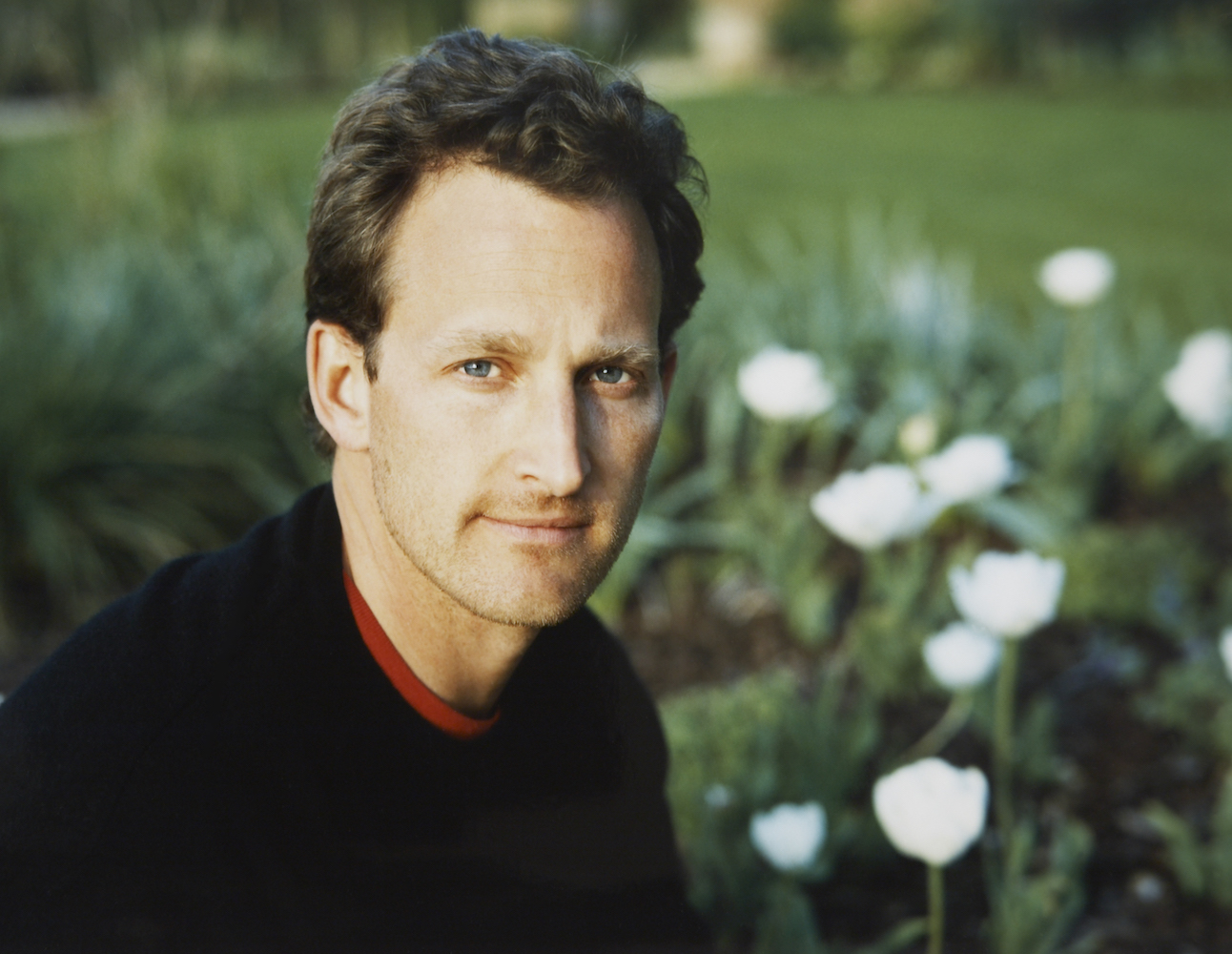 Robert Fairer, photo courtesy Robert Fairer.
Robert Fairer, photo courtesy Robert Fairer.
WHITEWALL: You’ve been a fashion photographer for almost three decades. How did your career begin?
ROBERT FAIRER: I did a couple of business degrees, then worked, and left my job after a couple of years. I decided to, with the encouragement of my wife, Vanessa, pick up a camera and follow my heart and be a photographer.
After I came out of photography college, with the help of Vanessa and her mother who was involved in fashion, got into London Graduate Fashion Week. That then led to London Fashion Week, then Paris and doing the catwalk. But through the catwalk, I discovered the backstage. At that point, my eyes lit up and everything changed.
It was such a different world. It was more individual; you could make photographs through interactions with the designers, the models, the hair and makeup artists. You could create an image, rather than just capture it. That very quickly became far more interesting to the magazines than the runway images.
So, we let the runway go, and concentrated on that. At that point, I was working for British Elle, and had an organic progression to more national magazines, then international—like Elle, American Harper’s Bazaar, and then ultimately American Vogue.
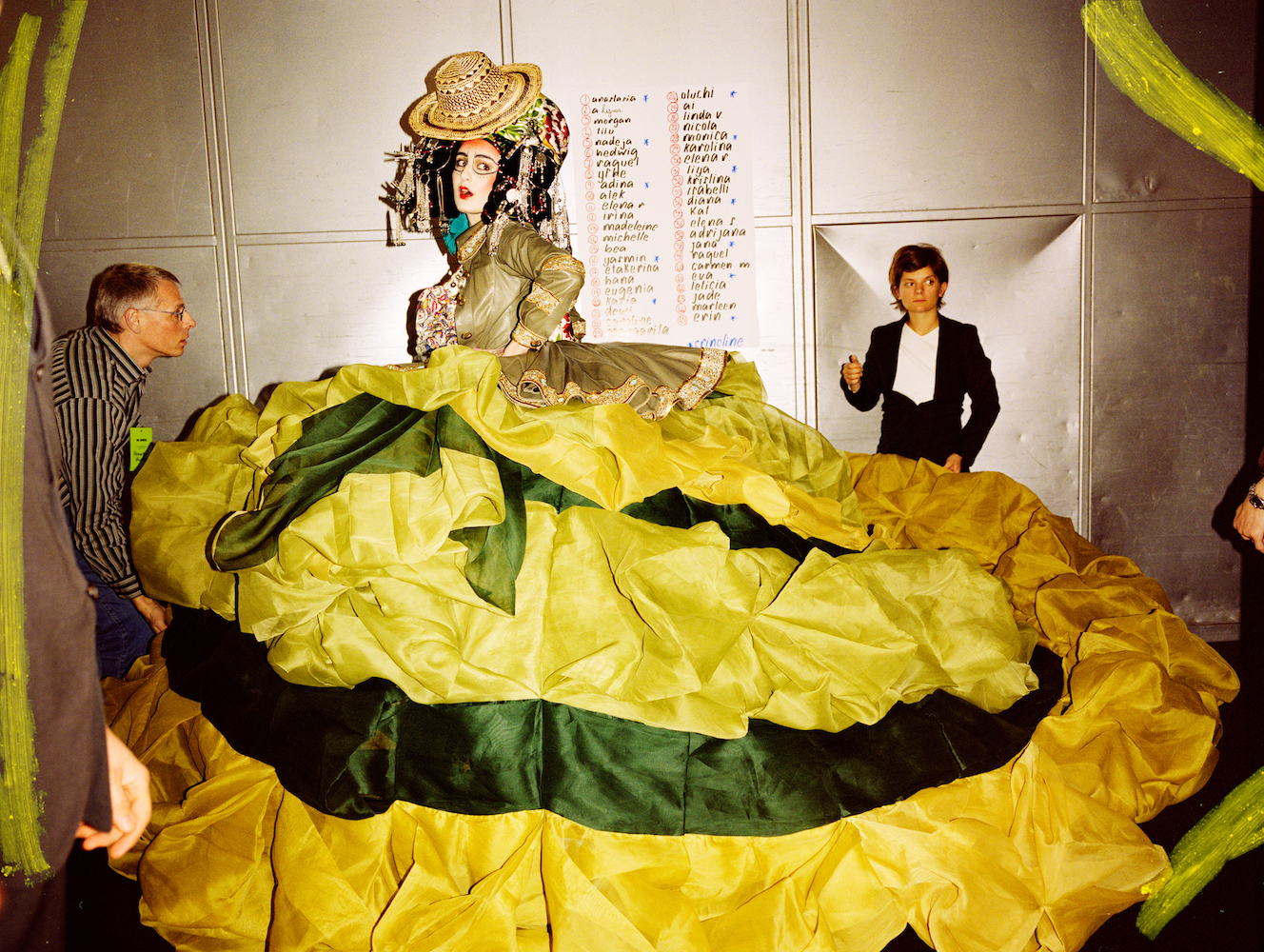
“”
WW: Would you say the look of your photographs have stayed the same or evolved?
RF: I started off shooting film, and that nowadays would be considered one aesthetic. But of course, when I started out in the ‘90s, it was all film. I was shooting transparency, which is particularly difficult to shoot because if it’s a little overexposed or a little underexposed, the photo would just be wasted. So, that gave me a strong technical ability with my photography and aesthetic. Then, we chose to move to negative film, which is more forgiving. I didn’t have to be so technically perfect. It could be a bit looser, and that began a much more prolific way of shooting.
Then I changed my cameras. I went from 35 mm to medium format because I wanted things to be as high-quality as possible. I wanted them to be a bit more studied, and so that they could be enlarged. When I was shooting for Harper’s Bazaar and then American Vogue, that was almost what was expected, but that’s also what I wanted to provide.
I lit my pictures backstage, as if we were in a studio. Even though magazines were helping me get backstage, no one can really help keep you backstage. It was only until the full-page or 15-page stories in British Elle, or American Harper’s Bazaar or Vogue started appearing that designers began going, “Okay, this might be worth it to let him play around.”
When digital happened, it opened up an entirely new world for me. You could see it on the camera immediately. This led to a whole new way of working for me. When I could see my stuff in real time, I’d say, “This is a great photograph, but we can make it better.” And then we did.
In terms of the energy, I like the women in my photographs to look like they’re moving—running off backstage to somewhere or something. At the same time, it’s also about making the dress look beautiful. A mix of energy and elegance has always been my aesthetic. I love big dresses and backdrops in juxtaposition with the fashion.
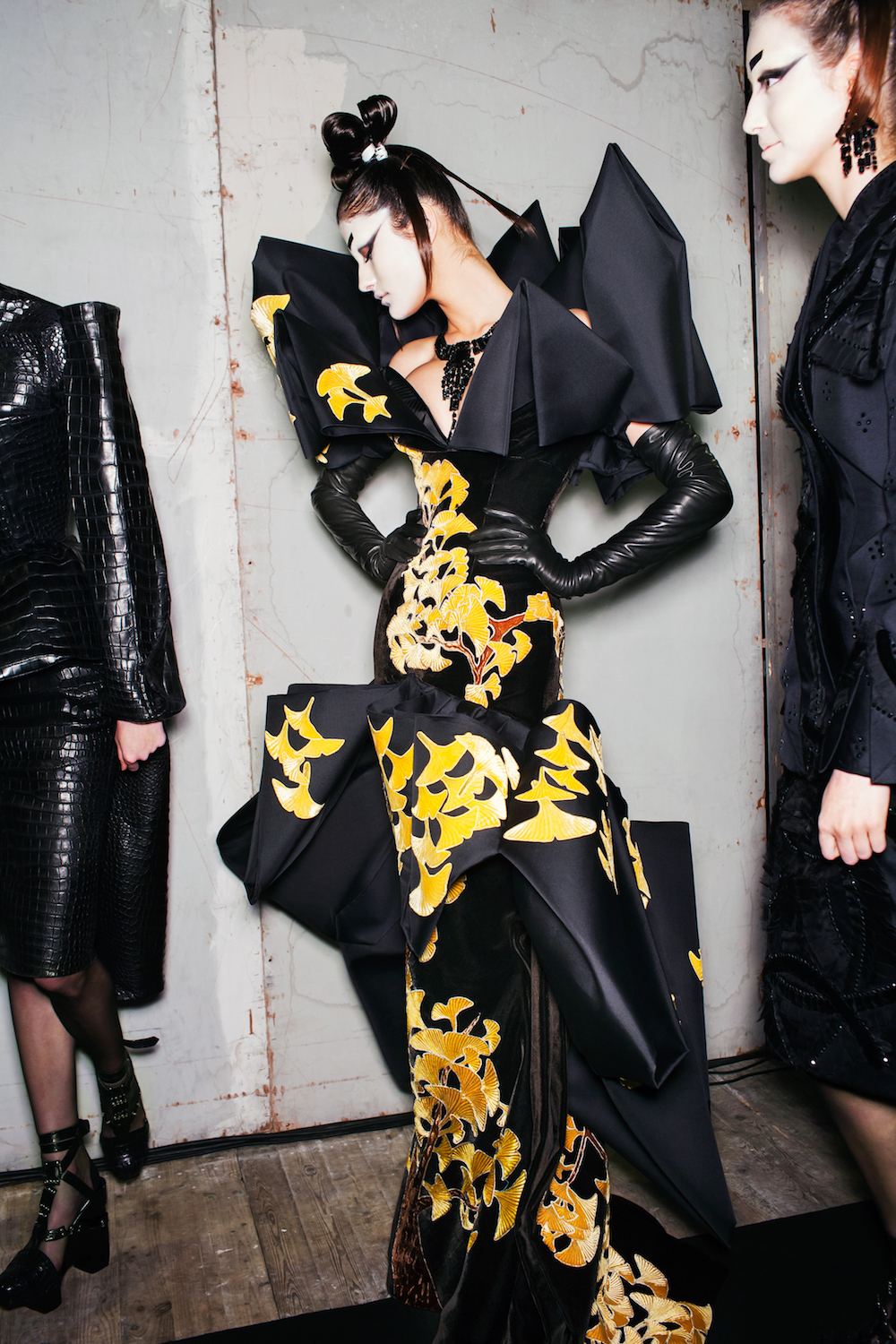 John Galliano for Dior, Spring/Summer 2007 Haute Couture, “Madame Butterfly,” model Katarina Ivanovska, hair by Orlando Pita, makeup by Pat McGrath, photo by Robert Fairer.
John Galliano for Dior, Spring/Summer 2007 Haute Couture, “Madame Butterfly,” model Katarina Ivanovska, hair by Orlando Pita, makeup by Pat McGrath, photo by Robert Fairer.
WW: What was the inspiration for “Backstage Pass”? What do you want the audience to see?
RF: They’ll see big photographs [laughs]. Some of them are larger than life, I think! There’s a wonderful soundscape to go with it, to bring you to the backstage area—like footsteps and sewing machines and hair dryers. The show does not run chronologically, rather gaining images from the four books I’ve published so far. From that, we have an aim to showcase that “Golden Age” of fashion photography—to share with people the skill, the teamwork that go into producing these incredible moments in fashion history.
As a viewer goes in, they’ll first be met with this oversized 40-kilo dress in two dimensions on Erin O’Connor right in front of them, which is totally unseen, because it didn’t make it out onto the runway. Too big, possibly it couldn’t squeeze through the aperture to get out on the runway, and rumor has it that Erin might have fainted. That sets the tone for the show. It allows people a glimpse into this once rarified world that maybe 60 or 100 people would have been involved in or seen—opposed to now, when the whole world gets to see it as it’s happening, pretty much.
It’s a wonderful glimpse into the lives of all of these supermodels, too, who are now becoming mothers and fathers and exiting the game slightly. It’s divided into four sections for the designers. And there are also groupings of images that show backstage hair and makeup and the collaborations they had with those artists and accessories designers, as well. It shows all the wonderful movers and shakers of that whole era.
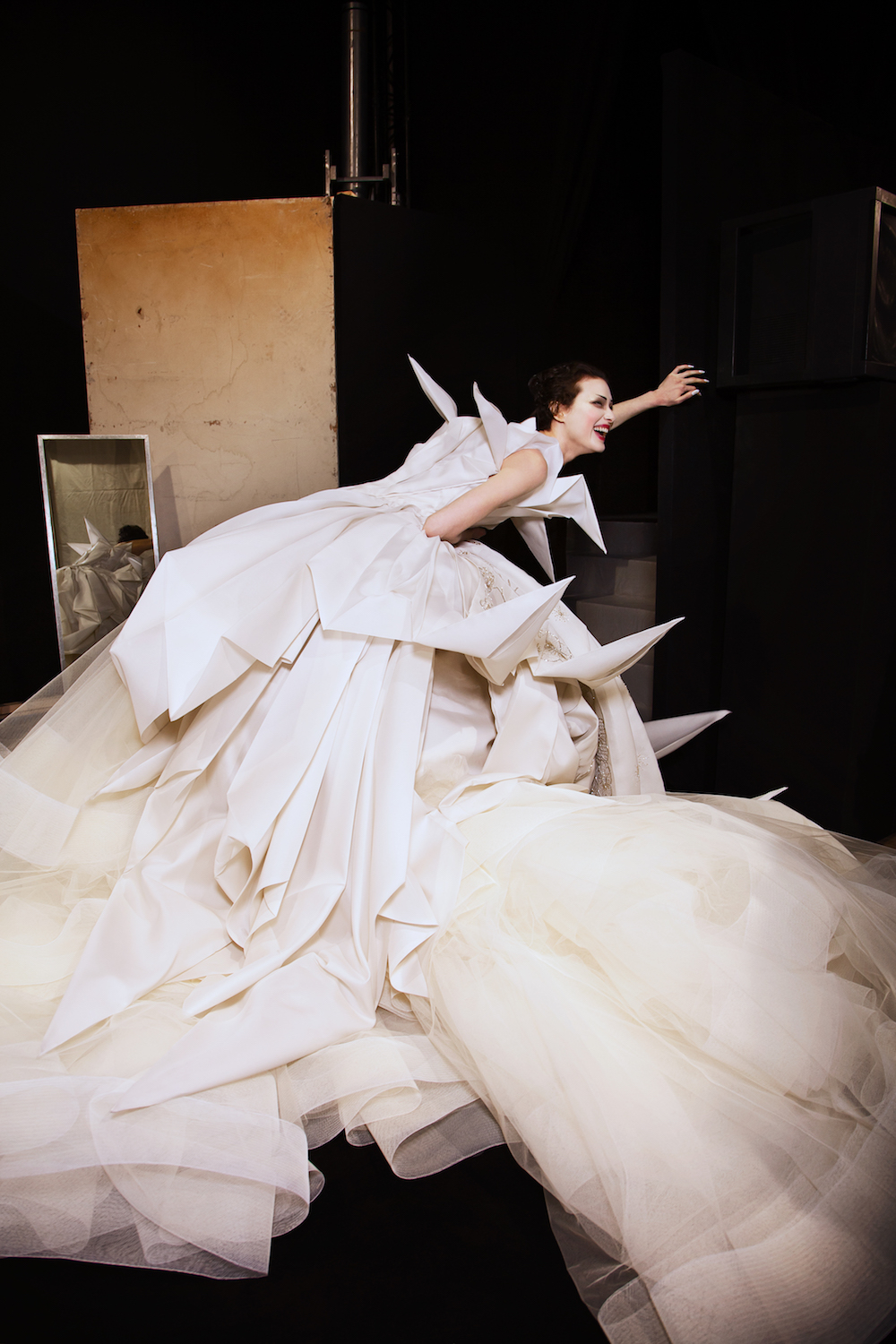
“”
WW: Is there one unforgettable backstage moment that you captured that we’ll see in the show?
RF: I’ll give you three. First is that moment I mentioned with Erin O’Connor in that huge dress. She’s against a silvery background, which is actually a freight lift. There are two people in there with here at the back of the lift, holding the dress, and the dress takes up the entire lift. It was magnificent.
The other image that I love is in that same lift. There were about 30 women in there, and they’re all looking at me shouting, having a bit of fun. I was with Andre Leon Talley at that particular Galliano show. He was shouting, “Robert! Robert! Robert! Get over here!” So, I get on my assistant’s shoulders, and take the picture, and Andre is rustling all the girls to play it out. And then I took this photo of Shalom Harlow at a Dior show in this huge white origami dress, and I just happened to be at the right place at the right time. It was before the show and other people were in hair and makeup, and she was having a final fitting to test out the dress because it was huge—the train was probably 25 feet long—and she was just laughing, wondering how she was going to do it. It is a beautiful image of her laughing in this gorgeous dress, with nobody else around. It’s one of the most exquisite photographs I’ve taken backstage.
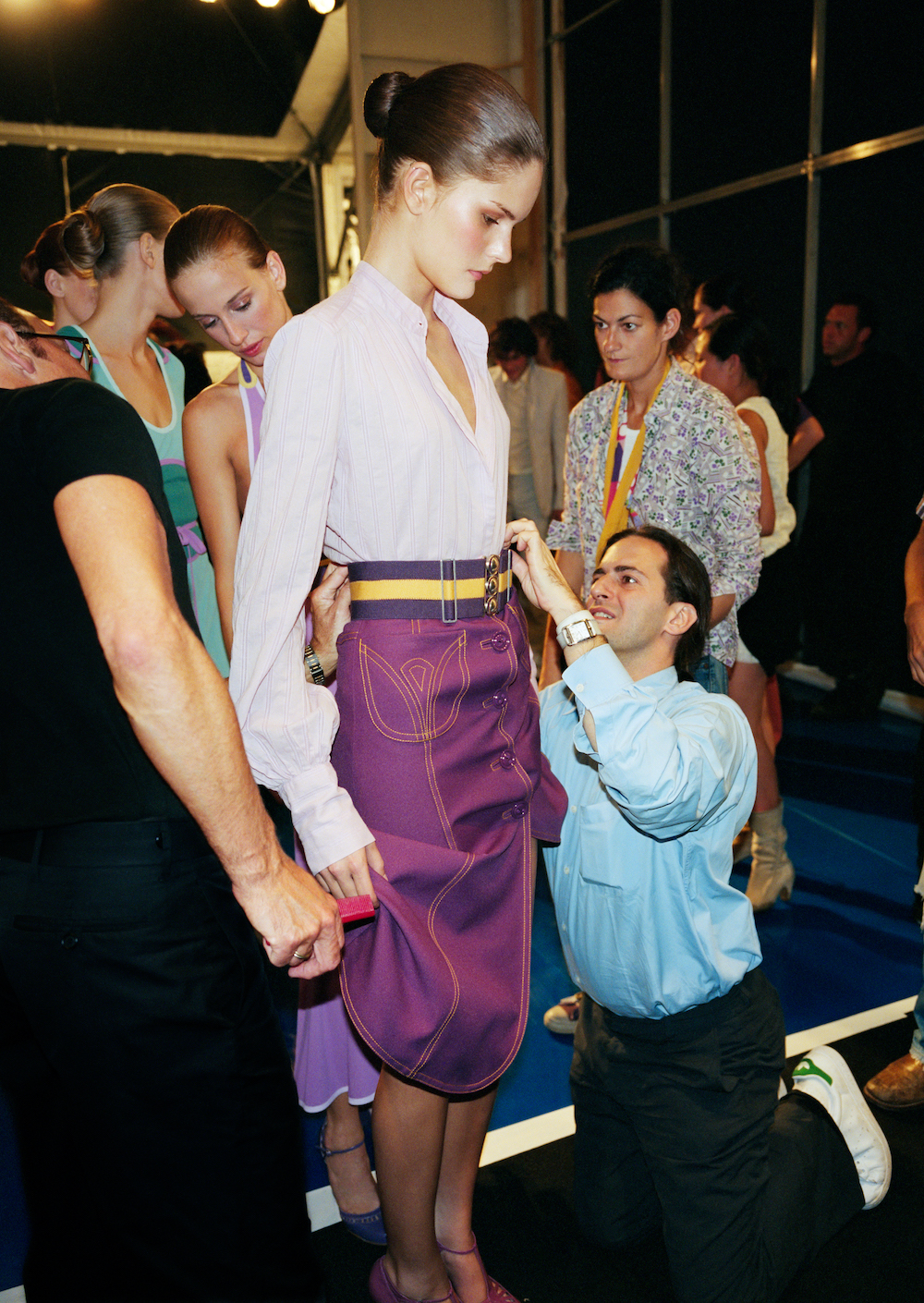 Marc Jacobs, Spring/Summer 2002, makeup artist Dick Page (left), model Marcelle Bittar (center), and designer Marc Jacobs (right), Venetia Scott (background right), hair by Garren, makeup by Dick Page, photo by Robert Fairer .
Marc Jacobs, Spring/Summer 2002, makeup artist Dick Page (left), model Marcelle Bittar (center), and designer Marc Jacobs (right), Venetia Scott (background right), hair by Garren, makeup by Dick Page, photo by Robert Fairer .
WW: Fashion photography means different things to people—from celebration to documentation. What does fashion photography mean to you?
RF: It gives me a way of expressing myself. It’s a canvas that can be used, and it enables me to channel my idea of women, I suppose. It’s an expression of beauty. It’s fun, it’s art, and yes, it’s a means of expressing myself, essentially.
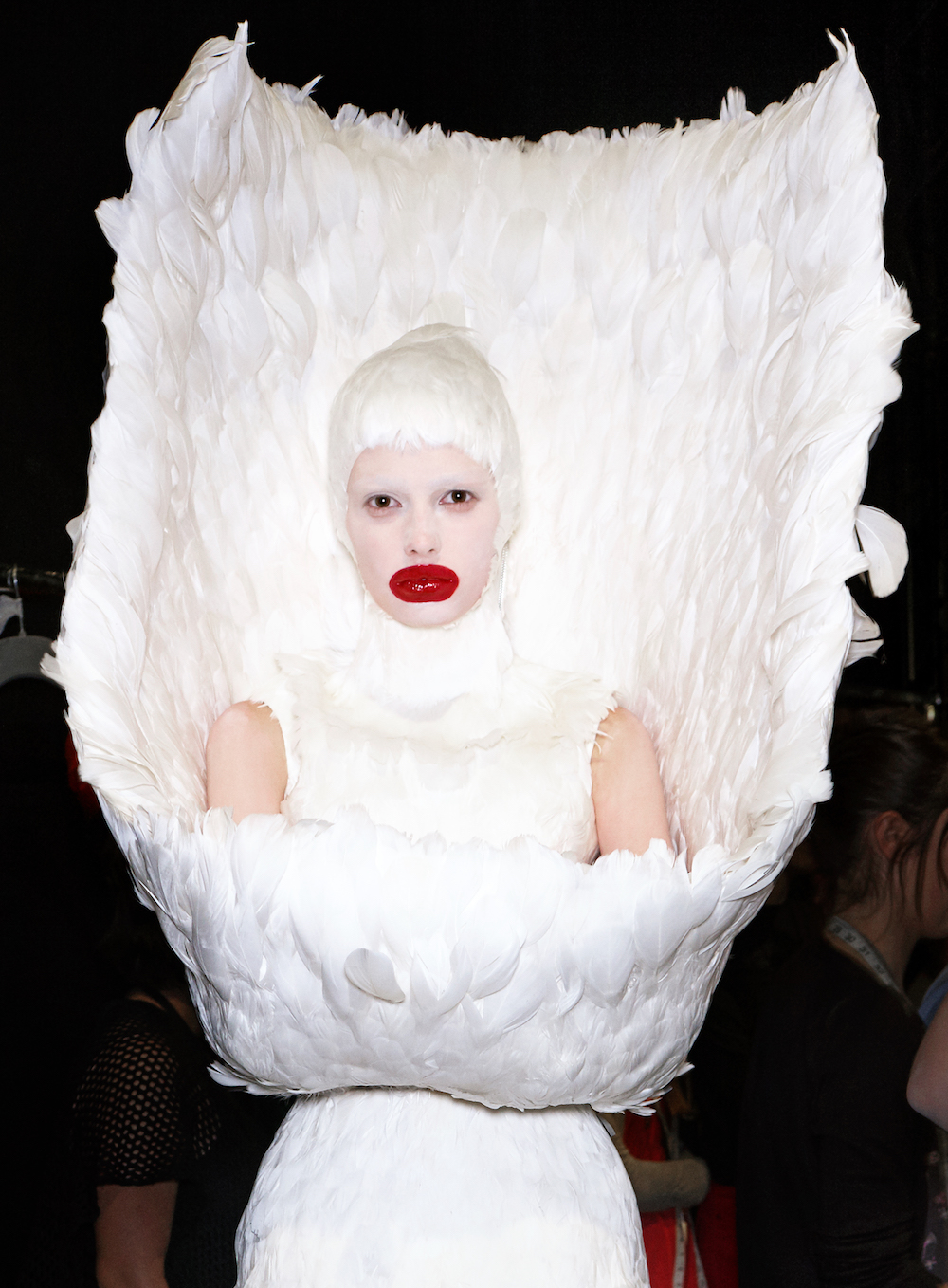
“”
WW: The role of fashion photographers has changed. What do you feel the role of a fashion photographer is today?
RF: The role of the fashion photographer is to help sell clothing. That’s really it. I will help sell clothing because of my life and my life experience, my upbringing, my education, the books I’ve read, the things I’ve seen. I may see the world in a particular way, and I try and portray the world in a certain way and the actors within that world.
Number one, it’s about the eye. Number two, it’s about the way you interact with people. It’s about chemistry, and it’s about what you bring out in the model’s personality. It’s about what you enable, or are able to coax out of your subject that gives you a photograph. I find it very important that I feel my photographs are genuine, believable, and credible. People look at my images and go, “I believe the situation that person’s in. That could really happen.” If I have someone in a beautiful situation, they have to feel comfortable. What they’re doing and how they’re interacting with their surroundings needs to be credible. They don’t look awkward or out of place, or if they’re uncomfortable.
So, the role of the photographer may be to sell clothing, but how you do that is then down to your personality and how you interact with models.
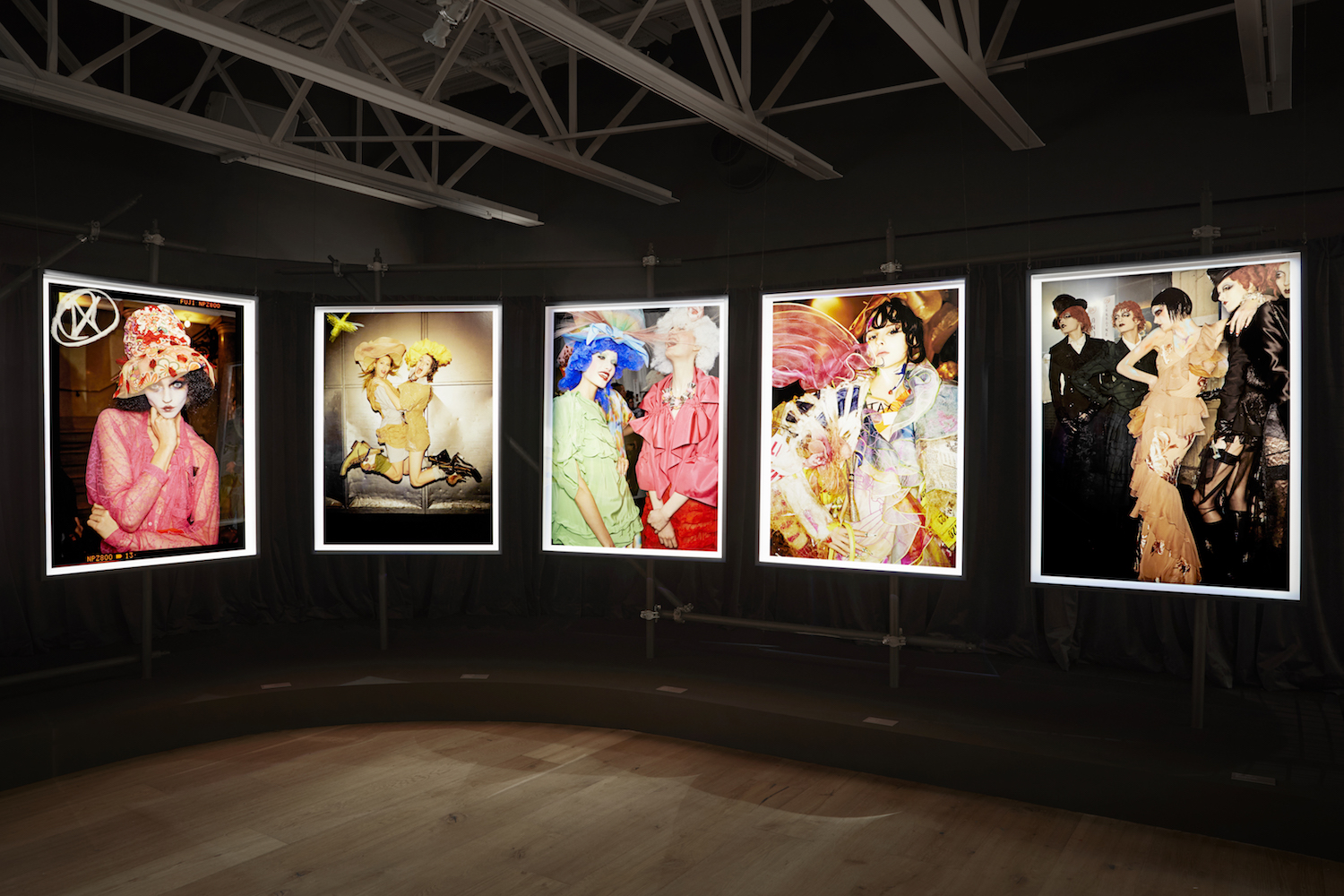
“”
WW: Do you feel your photography has a storytelling component to it?
RF: 100 percent. It’s all about storytelling—and backstory, thinking, “I wonder what happened before and after?” I hope people will look at that and sort of imagine and feel themselves in the environment, surrounded by what is happening. Ivan Shaw, who was the photo director at American Vogue for many years, said to me on many occasions, “The images are beautiful in themselves, but they’re very strong as a body of work. Looked at in isolation, they’re fabulous, and someone might want to hang them on their wall, but as a body of work, you really fall into it.” It gives you an understanding of the golden era of this backstage phenomenon. So, yes, I very much like to try and tell a story in one picture, and sometimes it takes two or three.
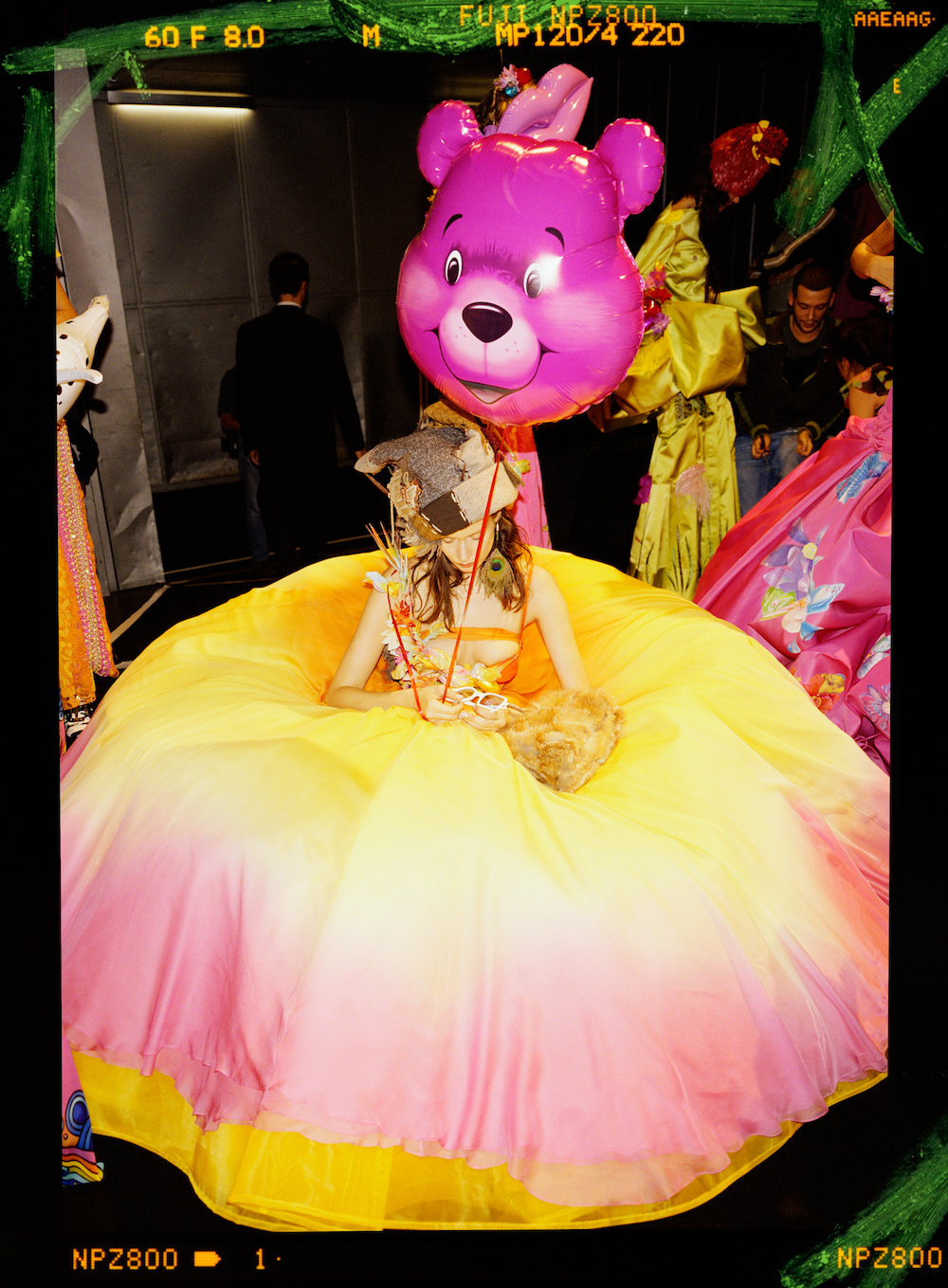 John Galliano, Spring/Summer 2005, “Too Rich to Walk,” model Melinda, hat by Stephen Jones, hair by Orlando Pita, makeup by Pat McGrath, photo by Robert Fairer.
John Galliano, Spring/Summer 2005, “Too Rich to Walk,” model Melinda, hat by Stephen Jones, hair by Orlando Pita, makeup by Pat McGrath, photo by Robert Fairer.
WW: Can you tell us about Karl Lagerfeld for Chanel: Unseen, your upcoming book?
RF: His was one of my first shows, back in the early ‘90s. He’d already been going for 20 or 30 years before then, so he was always a fashion god to me. He was instantly recognizable with his white ponytail, black suit, leather gloves, all those things. It’s so easy to caricature, and in his later years, with his black and white pussycat.
I met him many times at the shows, and of course, many times at rue Cambon in Paris, where they have the Chanel couture atelier. One of the side effects of working at American Vogue was that Anna Wintour pushed me in the direction of some of these uber incredible weddings that happened once every couple of years—some prince or supermodel or billionaire. So, I had the huge fortune of witnessing fittings. Karl would be there in some shape or form, and often followed around, especially at the shows, by a lovely mustached gentleman carrying a silver tray and a glass of Coca-Cola. Then, it turned to Diet Coke. So, there are hundreds of people jostling around, dresses flying around, girls running around, and there would be this guy with his silver tray and his Coke trying to avoid everybody. He was always about two steps of Mr. Lagerfeld—a real skill.
The shows went from large venues in the early years to the Grand Palais. You could always see him, and where he was. He was always present. Super friendly and polite. He would always say, “Good morning,” and ask, “Is everything alright?” Some designers are incredibly stressed before their shows, after creating a collection for six months. Lagerfeld? Everything was done.
He would stand at the front of the line and watched the models as they went down. Everything was already perfect, he never had to rearrange anything before they went out. It was all so smooth. He loved having his photograph taken; never had to be asked twice. Amanda Harlech is contributing, and Andre wrote a wonderful essay. We have lots of other people contributing, who did hair and makeup over the years, some models, and some Chanel brides, as well.
We’ve been so incredibly lucky in the fashion world, and with SCAD, we want to give it back. We want to educate, show, and share because it’s too big to keep private.
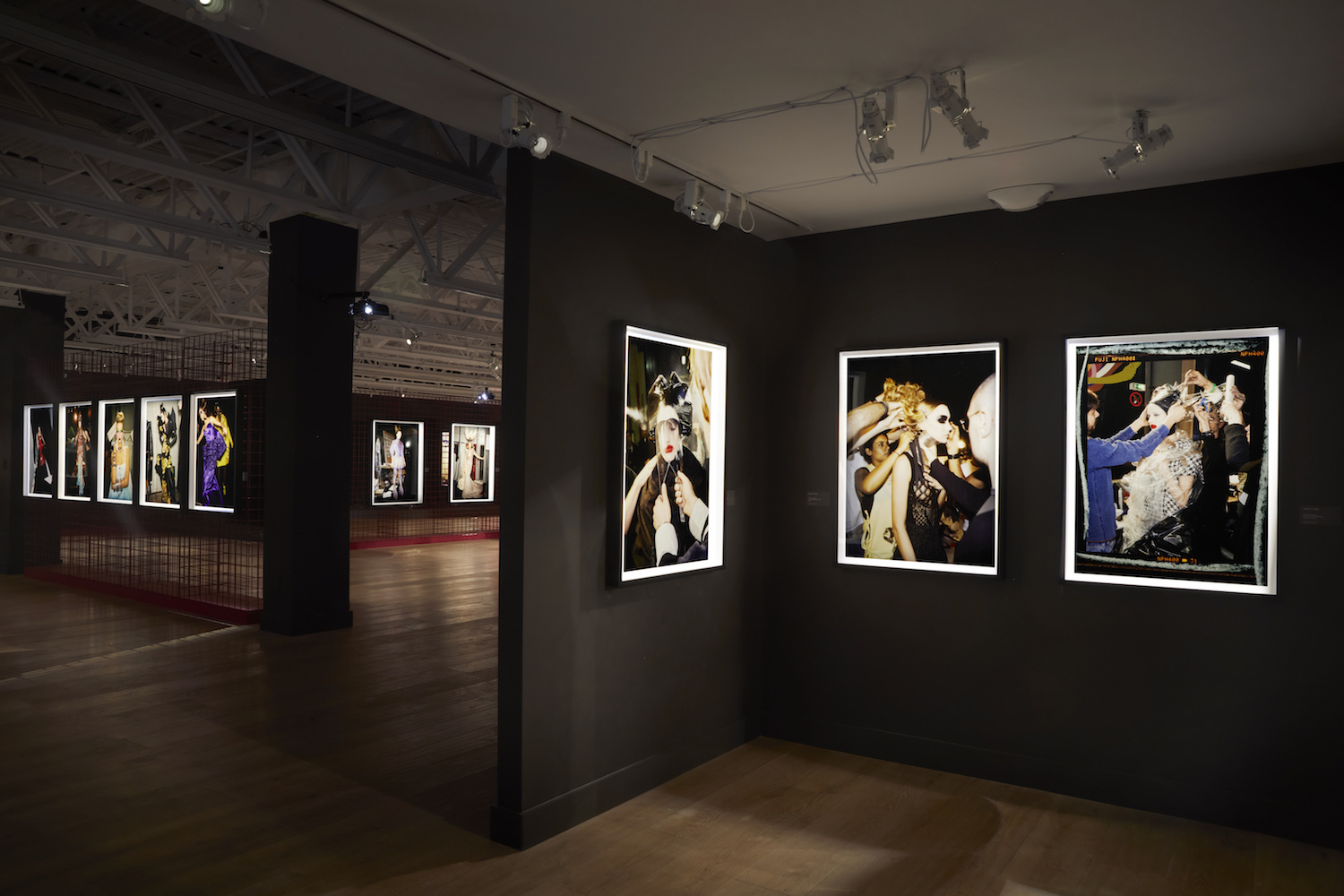
“”






